#murrumbidgee
Text

Fording the Murrumbidgee River at Gundagai, NSW.
#australian history#black and white#australia#old photo#vintage#vintage australia#murrumbidgee#new south wales#gundagai#river
10 notes
·
View notes
Text
ROAD SOUP
Living on a farm in Australia means driving, lots of it. The nearest grocery store is twenty to thirty minutes away, traversing a couple of low bridges, gravel roads and the Barton Highway.
That’s why it’s worth keeping chooks, a vegetable garden and fruit trees so there are always emergency food supplies. Fifty years ago there was no low bridge over the Murrumbidgee, and Esdale was much more…

View On WordPress
0 notes
Text

Drifting #3
37 notes
·
View notes
Text
here in a garden, walk along hand in hand
cry for the children who got lost in wonderland
smile for the public
6 notes
·
View notes
Text
My Second Hazbin Hotel OC

Name: Johnny Wasikowska
Age: 20
DOB: September 19, 1955, New South Wales, Australia.
Date of death: June 28, 1975
Cause of Death: Water Tubbing accident
He became flying fish like demon due to a water rubbing accident he had. One summer day, When he’s out of college during the summer for vacation, Johnny and his friends decide to go Water tubbing on the Murrumbidgee River, they are having fun until all of a sudden Johnny flew out of the tube and crash landed onto a huge rock in the middle of the river, One of his friends realize his head was split open revealing his broken skull and exposed brain, they called 911 but Johnny is dead. Johnny is describe as a happy-go-lucky and is willing to help others in need, he also a great surfer as well and one day, he’s willing to work as a lifeguard but never get the chance now he’s in hell.
I made him from this video so you can make your own sinner:
youtube
3 notes
·
View notes
Text
The Great ACT-NSW-NZ Trip, 2023-2024 - Wagga Wagga

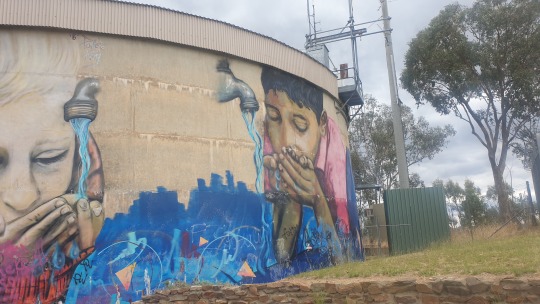
Wagga Wagga is the largest inland city in New South Wales, positioned on the Murrumbidgee River, roughly halfway between Sydney and Melbourne. For a while, it was a contender for the national capital (there being not a hope in hell that Sydney and Melbourne would ever support the other's claim).
It's built on clay soil and surrounded by bedrock hills, which isn't doing soil saturation and salinity any good.
Most of my Mum's side of the family hails from the region, and they're all returned there in subsequent decades. That's why @purrdence testing positve for COVID the day we arrived was especially galling, since the main reason we went there to see my Mum and the rest of the extended family for Xmas, and @purrdence ended up stuck in bed for the duration of the stay, and I of course wasn't going to risk infecting anybody. (Not that getting more COVID tests was a breeze - I had to hit half a dozen different places before I found one that was 1) open and 2) actually had any.)
Happily I was the only person at the reserves I poked around at, so there was nobody for me to infect.
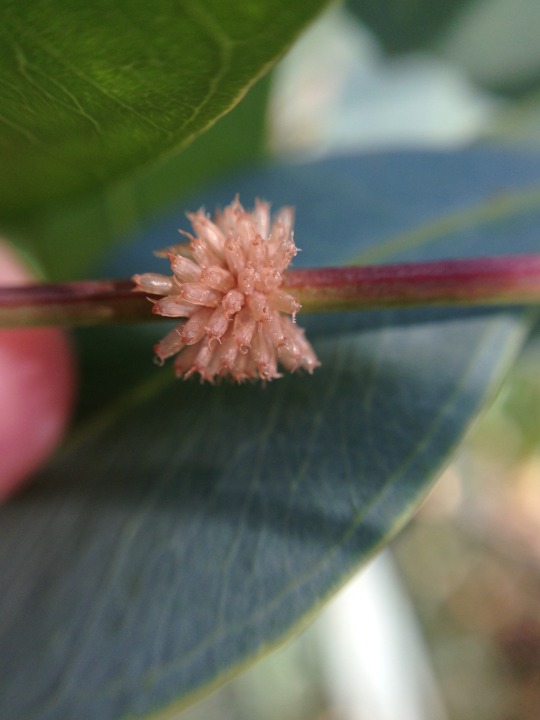


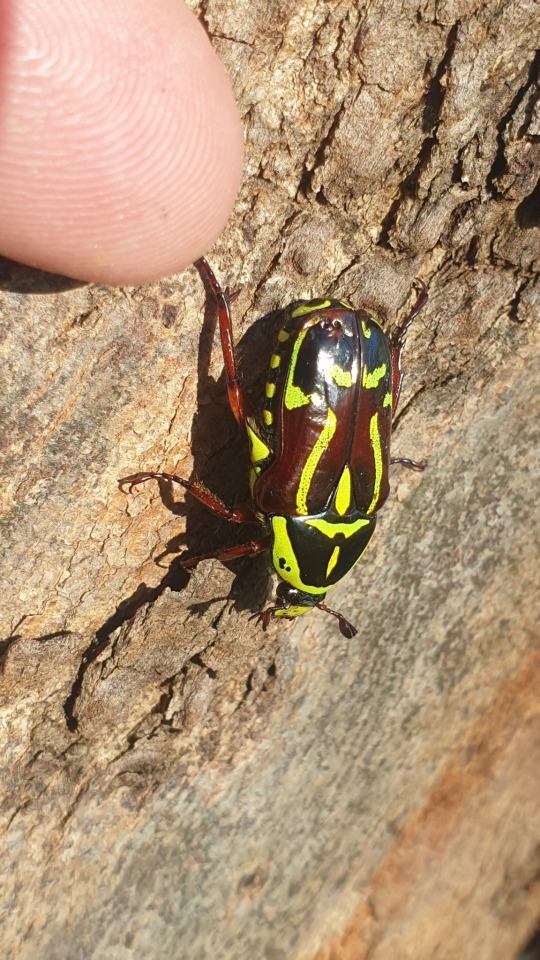
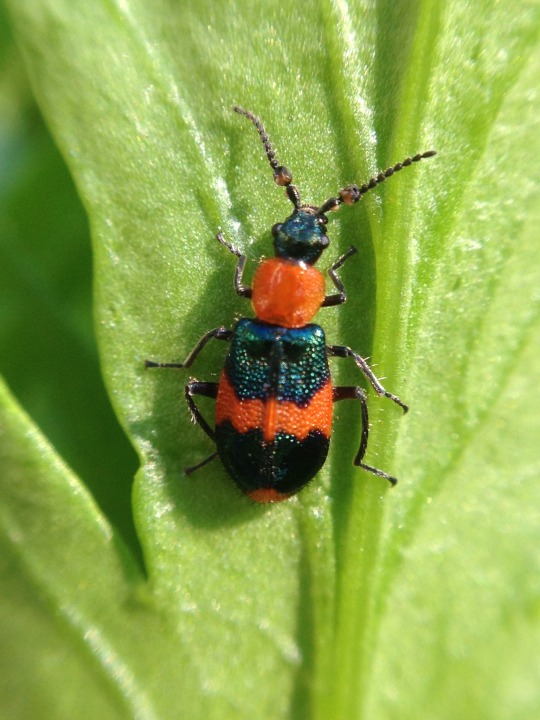
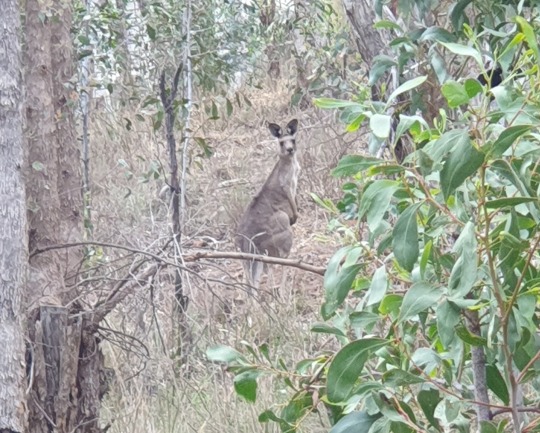
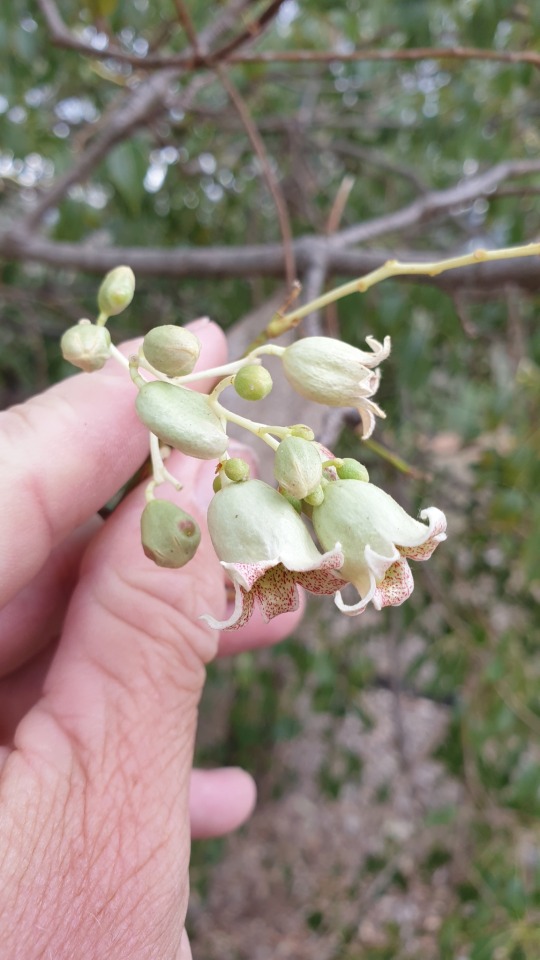

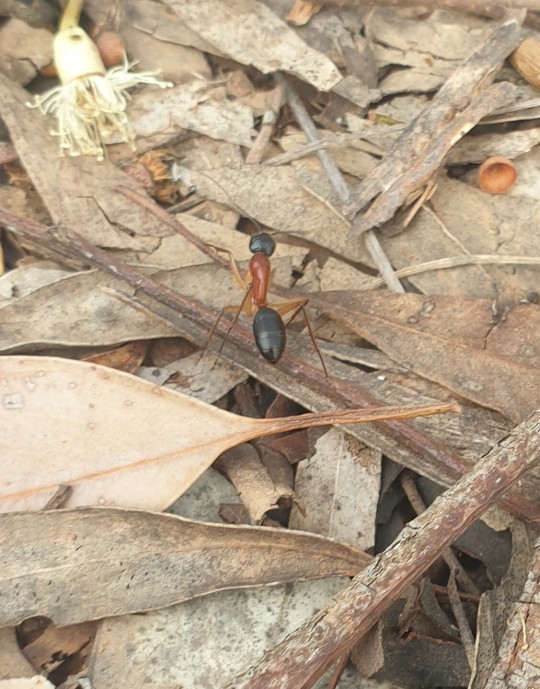

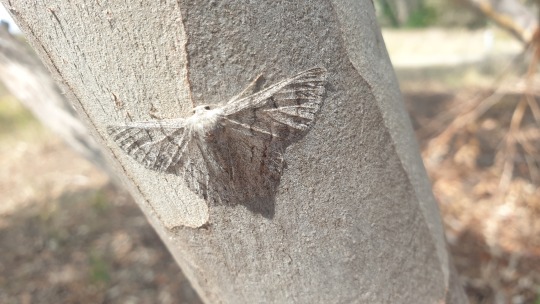
#wagga wagga#australian bug#australian moth#australian spider#tw: spider#spider#australian wildflower#australian beetle#kangaroo#marsupial#australian ant
2 notes
·
View notes
Text
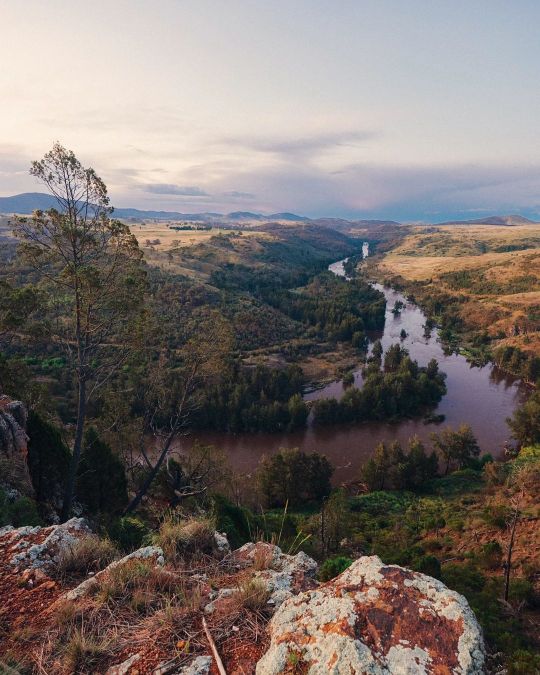
Shepherd's Lookout, the northernmost point of the Murrumbidgee River. Australian Capital Territory. X
#canberra#australia#countryside#australian countryside#nature#nature photography#australian capital territory#bush#river#water
19 notes
·
View notes
Text
I guess today is the 20th anniversary of the Canberra bushfires. I... remember that. It was a Saturday, so I had a recorder lesson that morning in Kambah. I remember looking at the big grey cloud of smoke behind... Mount Urambi I guess? I didn't know what the hill I saw was called, but Mount Urambi's in the right direction.
I knew there'd been fires burning for a while, but I think that was the first time I'd actually seen any sign of them. No official warnings, though. So later that day, we went to the cinema in Civic to see Spy Kids 2. Maybe to take advantage of the cinema's air conditioning? It was a very hot day, maybe as hot as it ever got here in the 2000s (40°C/104°F). I remember that summer was so hot that that I only wore closed-in shoes once over the entire school holidays.
Once we came out of the movie, a theatre employee said something to me that I immediately forgot before I could even absorb what they'd said. Unrelatedly, I didn't get a full ADHD diagnosis until last year. Anyway, I'd guess that it was related to the state of emergency that had been declared while the movie was playing.
When we got outside, the sky was red, and there was a hot wind blowing. I hadn't even known wind could be hot. We got in the car back home, and both my sister and I remember seeing fires burning on Mount Taylor, although according to the timelines I'd seen, it hadn't reached there yet. We stopped at the shops, and it was dark, and the sky was black and raining ash. The emergency warning sound on the radio sounded like it was part of a joke.
I don't remember if I helped with preparations in case the bushfire reached us when we got home, other than reading from a book I had on bushfire preparedness. I hope I did. I know I was way calmer and more capable than usual. I did change into covered shoes, though. I remember that part.
My other memories of that day are of standing in the backyard and looking around, calling a friend (Actually a "friend", but the details aren't relevant here) who turned out to have lost power even though she lived fairly close by, and watching a DVD of... Dad's Army for some reason? My parents like that show, I think.
I think the state of emergency where we lived was lifted before the end of the day, maybe because of the cool change I hear happened in the evening. I remember waking up the next day and immediately asking if the fires were out. They weren't, but the danger wasn't as immediate anymore.
Meanwhile, in places that the fire did reach, five hundred homes were destroyed, and four people died. The water treatment plant in the north also got hit, and for days afterwards we had to limit how much stuff we could pour down the drain, so the water treatment plant didn't overflow and release raw sewerage into the Murrumbidgee to eventually end up in Adelaide. Or that's what I remember being told, anyway. There was also smoke everywhere for days, making everything look yellow. From what I've read, I guess the fires were out by Tuesday? I don't remember.
In early 2020 there was an out-of-control fire not that far from here. You could see it burning in the hills from the south side, and it was responsible for the first state of emergency in the ACT since 2003, although it didn't get close enough to do any damage. The supermarkets all ran out of bottled water, for reasons relating to all that stuff I just said. This was right near the end of the worst of that bushfire season as well, where basically the entire southeast coast burnt down.
Oh, here's a fact that's sort of fun and only tangentially related to stuff you could describe with words like "collective" and "trauma"! The first documented fire tornado was recorded during the 2003 Canberra bushfires! I think they'd been reported before, but this was the first verified one that was definitely a tornado. And although the concept of a tornado of fire is horrifying, it does help to know that they can happen and how they work. And this one thankfully seems to have mostly gone through the naturey area between Tuggeranong and Weston Creek, instead of much over people's houses.
#Canberra#bushfire#Canberra bushfires#Every time it comes up I always realise that I'm more messed up over it than I thought#Especially since the fire didn't actually reach where we were#It must be so much worse for people more directly affected#That's why the disappearing bottled water#Or maybe they were just practicing for the run on toilet paper a couple of months later#Anyway if you ask me about the plot of Spy Kids 2 I could not tell you
18 notes
·
View notes
Text

Críptido del día: El Bunyip
Descrioción: El Bunyip es representado como una combinación de las características de un ave y un cocodrilo. Tiene una cabeza que asemeja la de un emú, con un pico largo terminado en un borde serrado. Su cuerpo y piernas son como los de un cocodrilo, con las traseras gruesas y fuertes, y las delanteras mucho más alargadas; pero con gran fuerza. Las extremidades tienen grandes garras, pero los negros dicen que su método usual de caza es abrazar a su presa hasta la muerte. En el agua, nada como una rana y en la orilla, camina sobre sus patas traseras con la cabeza erecta; y en esa posición mide hasta tres metros de alto. En enero de 1846, un cráneo fue extraído del banco del río Murrumbidgee, cerca de Balranald; Nueva Gales del Sur. Los reportes iniciales sugerían que era algo "completamente desconocido por la ciencia". El excavador que lo encontró dijo que todos los nativos a quienes se los había mostrado lo llamaban un Bunyip.
3 notes
·
View notes
Text
Filling the Gaps
This is my year for filling in gaps (not just in my blog, oops), but among my trees. Lots of non-tree things have also been happening, but I’ll fill those gaps in separate posts.
First we had to go back and find the trees that didn’t quite make it from last year. I’ve now conclusively established that Phalaris grass is a killer of young native trees, and has to be sprayed out to stop it doing…

View On WordPress
#allocasuarina verticillata#Australia#casuarina cunninghamiana#conservation#eucalypt#Greening Australia#Landcare#Murrumbidgee River#Phalaris#Revegetation#Tagasaste#weeds
0 notes
Text




Breakout
White wattle, Murrumbidgee River
On my travels
#original photographers#nature photography#flower photography#White wattle#on my travels#Murrumbidgee River
53 notes
·
View notes
Text
Kambah Turns 50
From Aug 16 to Oct 12, the exhibition Kambah Turns 50 is on at one of Canberra's Territory-government funded arts venues, the Tuggeranong Arts Centre https://tuggeranongarts.com/kambah-50-group-exhibition-16-aug-12-oct/

I'm the curator and artist behind the exhibition. It had great coverage in the Canberra Times last Saturday (24 Aug) with a box on the front page and an almost full page review. The online version called it a 'must-see exhibition'. The exhibition is just one component of this project about my suburb Kambah. The purpose was to explore how we can build relationships in our community, strengthen our ties. I've been working over four years to explore how heritage and our sense of a past that we share through the celebrations of the 50th this year can do this. The success of the exhibition and the numerous related events suggest it's worked.
How does this connect to Perth? Kambah and Midland seem to share some things in common - era and planners, it seems that Gordon Stephenson had a hand in both. So there may be work to do to explore reputational repair in Midland as well. I spent lots of time in Midland in the first quarter of 2024.
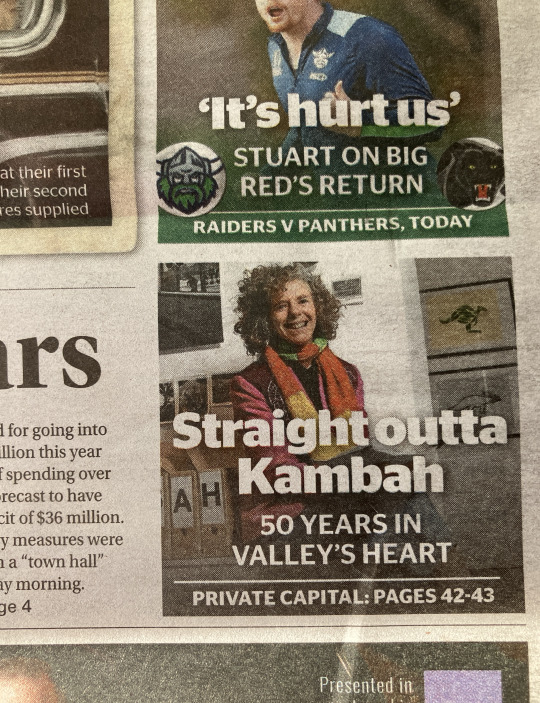
Front page of the Canberra Times, Sat 24 Aug 2024.
It includes the work of six other artists and items from cultural collections in Canberra and other parts of Australia. Also in the show are items from residents and former residents, works created by the Arts Centre with a local school and photographs discovered through a public program run by the Arts Centre. From my perspective, the whole exhibition is an artwork, an exploration of my suburb Kambah and how it is viewed and experienced. Why do I think of it as an artwork in itself? What follows teases this out.
Kambah is a suburb of Canberra with a mixed reputation in the ACT community. In 2009, it was honoured or maligned, depending on your point of view, as Canberra's biggest bogan suburb. I've lived in Kambah for a decade and when I moved here, I was puzzled by this reputation. Yes, we are mixed socio-economically and our housing is diverse - from thoughtful 1970s architecture to modest state-built houses, government houses or 'govvies' as we call them in Canberra. Yet we're surrounded by hills, right next to the Murrumbidgee and with the backdrop of the Brindabella mountains. It is physically beautiful with a canopy of 1970s eucalypts that means the houses of the suburb almost completely disappear when you view Kambah from the hilltops.
Kambah has a history of losing things - some of this is about not recognising the heritage we have - an example is the homestead of the station 'Kambah', pulled down following vandalism in the 1980s rather than repaired. Other parts of Canberra have their no-longer-needed public buildings, like schools, converted to community centres. Not in Kambah - they are sold, no longer for the community. Research from 2008 conducted by Kambah locals showed we have low social capital with few social networks based in the suburb. Since I came to Kambah I have been an environment volunteer, leading a landcare group. I wondered over our reputation but I also began to recognise it as a risk for us for the future - Australian experience in the past five years shows that as climate change bites, communities that can come together will fare better, communities of South Coast NSW are an obvious example to Canberra people.
In this context, I began a project to map the experience of Kambah, mine and others. This led me to investigate collections and gather reports and reflections from residents into an online 'scrapbook' with a handful of entries in a locative media map for the mobile phone. I grappled with challenges all archivists face, how to represent a community authentically and ethically. So I turned to my own representations of Kambah with a long series of pinhole photographs and photograms. I exhibited these in 2023 at the same venue in the exhibition Kambah. The goal of that exhibition was to learn more stories from the community and to explore what we could do to build our social capital, what could bring us together. I was aware that Kambah would turn 50 in 2024 and I began to explore community reactions to celebrating this milestone. During that 2023 exhibition, I held a series of public events - a physical meet up of the local Facebook group, a kitchen table conversation to talk about planning blueprints for our part of Canberra and a gathering of south Canberra artists. In my mind, the goal was to find ways to bring people together and strengthen or create bonds. I put in a proposal to the Arts Centre for an exhibition on Kambah's 50th. I began having meetings to talk specifically about Kambah's 50th - initially it was a tiny group, mostly of the artists. They contributed the early ideas for how Kambah should celebrate 50 - art at the shops, renaming landmarks to Ngunawal names were two. The Facebook group convenor amplified our small meeting by discussing it on the Kambah noticeboard, members shared ideas: a burn-out comp and bushdance were two that came from there. By then I had confirmation of the exhibition from the Arts Centre so dates were set. I put in a grant drawing on the artists ideas to see if we could make them reality - not successful. In early 2024, meetings drew a few more people and more check-ins with the Facebook group took place to see what resonated with the community.
We soon became a fairly regular group but still just a handful. The ideas and the program took up some of the early ideas and augmented and added to them. Individuals took the lead on events. As we called out for resources, we drew new people and became a group of about a dozen. My role was to start the conversation, push forward on the program, refine and develop the ideas the community suggested and respond as new people offered new ideas and skills that extended what we'd initially planned. The burn-out comp became a classic car show, the long table lunch wasn't exactly one long table but it was a very exciting day with our Federal MP and the Chief Minister in attendance.

Left to right: Pip, Rachel, Andrew Barr, ACT Chief Minister, David Smith, Federal MP for Bean.
The barn dance was dropped as it became clear the community didn't really want it. The bones were there from the first meeting in October 2023 for quite a few of the events but they have been elaborated and expanded in very exciting ways. The ambitious three part heritage day organised by a local historian started as a modest morning walk around the old farm. New events have been added - a trivia quiz, kids' colouring and poetry competitions are examples.
It's such an exciting ride to see the events become reality and to see the Kambah community enthusiastically show up to be part of them.
The challenge is how to claim and share credit appropriately! As an artist, I just want to share it but as an academic, I have a responsibility to claim some of it. Tricky.
The whole idea was to get the community to run with this and claim it for their own. That's been successful beyond my wildest dreams. I do appreciate the personal recognition as I have invested much time and energy. I have a printed section of Hansard in which my Federal MP acknowledged the project and my role in it. The Canberra Times wrote a great review of the exhibition.
Here's the Hansard extract:

There's been lots of media
The Canberra Times Sat 24 Aug 2024


RiotACT - 'Happy birthday, Kambah! The biggest suburb in the Southern Hemisphere, right?*'
4 June 2024 | James Coleman
Mix 106.3
6 July 2024
17 Aug 2024:
Kambah turns 50 this year. To celebrate an exhibition was launched through the week. Louise Curham, Kambah Resident from Kambah Turns 50 shared details about the exhibition

Other media:
Valley FM local radio - interview July 2024
Other media not focused on me but covering Kambah Turns 50:
Canberra Weekly - coverage of Kambah Turns 50
Canberra Times - coverage of Heritage Day events in Kambah Turns 50
Canberra Times - coverage of first residents of Kambah
All the events:
Lantern Walk 10 Aug
Long Table Lunch 18 Aug
Church service 25 Aug
Kids poetry and colouring comps 10-31 Aug
Classic Car Show and Village Fair 31 Aug
Heritage Day 7 Sep
Dogs Picnic 8 Sep
Environment walks 14 Sep
Sunrise walk 15 Sep
Welcome to Country, Smoking Ceremony and planting day 15 Sep
Sustainability Day 22 Sep
Trivia comp 10 Aug to 26 Sep
Arts Centre events:
Call for photos from residents July 2024
Kambah Now and Then - rephotographing Kambah, a workshop with PhotoAccess Aug 31-15 Sep.
Some of the event socials:



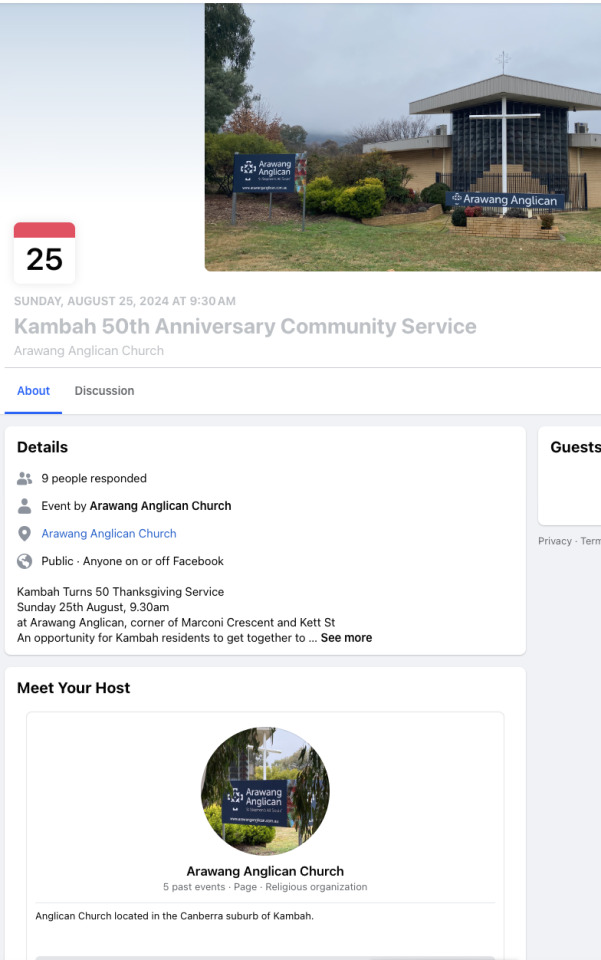



The Riot ACT article:
Happy birthday, Kambah! The biggest suburb in the Southern Hemisphere, right?*
4 June 2024 | James Coleman
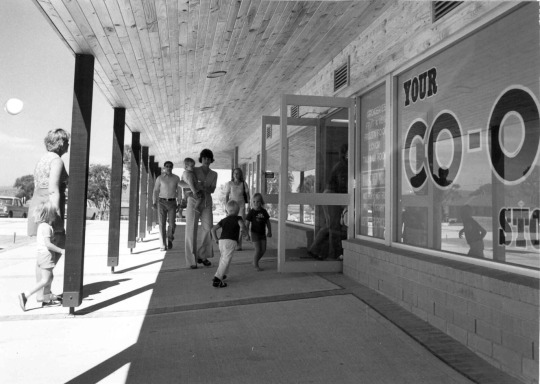
The Kambah Co-op was founded in 1975 to protest the suburb’s overpriced supermarket. Photo: ArchivesACT.
Kambah was named “Canberra’s booner capital” in 2009 by now-defunct satirical news website The Punch when the anonymous author highlighted the “number of V8 Falcons on the nature strip, wandering terrier dogs, and the enormous size of the local Burns Club”, but there’s a lot more to Kambah than that, according to local Louise Curham.
The loyal resident of 10-plus years is organising a series of events this year to mark 50 years since Kambah’s first residents began moving in in June 1974.
Louise has already spent more than four years constructing a digital map of the entire 1130-hectare suburb, complete with video, audio, text and image entries on various locations so users can tap on an area to learn more about it.
During research for these entries, she would ask everyone the same question: “Is there something about Kambah you know that you would like other people to know?”
She says the answers have been fascinating.
“People from the outside would think Kambah is surely a place you’d like to leave. But I’ve learnt this is not the case. There are a lot of second-generation Kambah people who love it.”
The suburb carries its name from the former Kambah sheep station, belonging to the Bennet family – Canberra aristocracy for their time.
“Kambah Homestead might have been part fibro, but it was very beautifully decorated and had pillars out the front and a sweeping driveway and swimming pool,” Louise adds.
“Life in early Kambah was pretty nice.”
Come the early 1970s, and with then prime minister Gough Whitlam massively expanding the size of the public service and Canberra’s population exploding 10 per cent year on year, the National Capital Development Commission (NCDC) needed somewhere to put all the young families.

The Kambah Woolshed. Photo: Wikimedia Commons, Nick D.
Rumour has it Kambah ended up so big because some public servant forgot to divvy it up into four suburbs, but in reality, it – together with Wanniassa next door – was planned as big territorial units made up of large blocks. They became known as ‘Nappy Valley’.
“The NCDC held this seminar, where they brought together a whole cross-section of age groups to learn what kind of suburb people wanted to live in,” Louise says.
“They were very much thinking about mental health. They were really trying to think about a place that would be good for people.”
To make room, the creek known as Village Creek was put underground through a pipe, and a large trap was built at the Lake Tuggeranong end to prevent upstream pollution from making its way into the lake – an engineering first for Canberra.
However, when Whitlam was dismissed and his successor Malcolm Fraser got to work slashing 17,000 government jobs, the prediction of 40,000 people in the valley by 1980 collapsed. All the houses were eventually built in subsequent decades but at a much slower rate.
READ ALSO Goodbye The Green Shed. Hello Goodies Junction. A new Canberra institution is about to be reborn
“It’s really interesting how these big-picture forces play out in our everyday lives that we never think or look at,” Louise says.
Kambah had its own grocer from the beginning, but it didn’t take long for residents to hit back at the overpriced goods by forming their own co-op-style supermarket in 1975, with shares available for $10 each.
Located on Mannheim Street, this was the first and only supermarket in Tuggeranong to be started and owned by a community and the second retail store to open in Tuggeranong.
A Kambah primary school also became the first in Canberra to feature a computer lab because one of the student’s fathers happened to work in the right circles and agreed to help source the equipment.

Kambah was designed to have several local shopping centres, even if some have since folded. Photo: ArchivesACT.
Of course, there are less glamorous accounts, too. Like one from the 1980s, when a male “exposed himself” to a young horse rider. And former pizza delivery drivers who remember the ‘munchies’ houses, where the occupants would round out their marijuana smoking with lots of pizza.
“To find ways to visualise stories like this without necessarily pinpointing them on the map is an interesting challenge,” Louise says.
But the vast majority are positive.
“I mean, like all suburbs, people are busy, and there are lots who live in Kambah who don’t really connect, but then there are others for whom this is a really precious place,” she says.
“And as we have all these planning conversations across the ACT at the moment, if those people don’t speak now, we’re going to get what they give us.”

Kambah has a pretty side. Photo: File.
Louise is hosting a ‘Kambah 50’ event in the foyer of the Tuggeranong Arts Centre on Saturday, 17 August, with a number of other events to come.
‘A Long Table Picnic Lunch’ will be held on Sunday, 18 August, and a dog-friendly community picnic on Sunday, 8 September, with a winter lantern walk, bush dance, and sunrise walk up Mount Taylor (with champagne at the top) also in the works.
*Now, if you’ve come all this way waiting for the claim about Kambah being the biggest suburb in the southern hemisphere, it turns out that’s not true.
Not even close.
In 2017, the ABC wrangled data from PSMA Australia that revealed not only is the Gulf of Carpentaria technically a ‘suburb’ and larger, but there are another 20 to 30 urban suburbs with a similar population size and density to Kambah, but over a larger area. And that’s just in Australia.
Sorry.
Visit the Kambah Turns 50 website or Facebook page for the full program of events. Explore the Kambah People’s Map online.
0 notes
Text
1973 junction Tuggeranong Creek Murrumbidgee
Archives ACT
Aerial View of Murrumbidgee River at junction with Tuggeranong Creek c1973 - Looking North
Mount Taylor is in the upper left corner.
0 notes
Text

5th August.
My uncle George, troubled by an unspecified "nervous breakdown" as a child, later played a central role in surveying the M.I.A - The Murrumbidgee Irrigation area around Griffith, NSW. In retirement he took up cross stitch to relax and find peace. More engineer than artist, this was a cross stitch of his apartment building in Mooloolaba, Queensland.
The glare of the young girl from Cusco, Peru justly reproaches me for not tipping her in her traditional costume on every visit l make to Uncle George's younger sister's home in Sydney.
1 note
·
View note
